So far, EURO 2024 has been a very emotional tournament for many people, but fans of two nations were still attracting even more attention than others because of their passion. Now, these two teams, Türkiye and the Netherlands, are going to meet in the quarter-finals.
Both teams have had varying experiences this tournament, and their path into the last eight teams has been somewhat rocky. While Türkiye were able to get past the group stages fairly easily, they struggled big time in the Round of 16 against Austria and only barely managed to scrape by in a rather lucky 2-1 win. On the other hand, the Netherlands had some troubles in the group stages of this year’s Euros, which was seen by their loss against Austria on Matchday 3, but came into their own in their Round of 16 matchup against Romania, convincingly beating them 3-0.
On paper, the tie seems rather one-sided. There’s a strong argument the Netherlands have been one of the better teams in this year’s Euros; their xG value of 6.89 ranks fourth only behind giants Germany, Spain and Portugal, while their xGA value of 4.76 isn’t great but still above average. On the other hand, Türkiye have created 5.55 xG throughout their four games, which is not an alarming stat at all, but have conceded 7.54 xGa, with only Georgia and Scotland conceding more goals than they have. In the end, Türkiye still managed to make their way to the quarters, so they shouldn’t be underestimated.
In this tactical analysis, we will provide an analysis of the tactics that helped them prevail in the tournament thus far, how their matchup will shake up, and what points could give one team a slight edge over their competitor. This side of the tournament tree is considered the more accessible side of the bracket, so the victor will be able to play a struggling England or Switzerland for a place in the grand final in Berlin. This game will be all about building confidence in their own strengths.
Predicting the Netherlands lineup
Ronald Koeman has taken different approaches to each of the four games the Dutch have played so far. While they have played with a back four for three of the matches, they also showed the ability to play with a back three in their first game against Poland. Considering Türkiye’s defensive struggles against Austria, however, it would be shocking if the Dutch gaffer decided to stray away from the 4-2-3-1 formation they had used in the previous two games.
Koeman will likely not participate in a big rotation with no current suspensions. Verbruggen will start at the goal, with Aké being set at left-back, and Van Dijk and De Vrij seem to be Koeman’s favoured pairing at centre-back. At right-back, Denzel Dumfries should hold the edge because of his offensive firepower over Geertruida. Jerdy Shouten and Tijiani Reijnders will likely start as a double-pivot in midfield, with Gakpo, Simon and Depay playing upfront.
The last place in the starting lineup will likely go towards Donyell Malen, who was left on the bench for the first half against Romania but was an electric sub, providing his team with two goals in the closing minutes of the game. The key player will be Gakpo, arguably the best attacker in the tournament so far and the Netherlands lifeline during these last couple of games.
Predicting the lineup for Türkiye
Türkiye played with a back four for the entirety of the group stages but went with a back three in the fixture against Austria. Even though they won the game, they conceded a huge number of chances against themselves in the round of 16, so they will probably convert back to their 4-2-3-1 formation as well.
Unlike Ronald Koeman, Vincenzo Montella will not be able to use all of his players on Saturday. His starting double-pivot against Austria, Orkun Kökcü and Ismail Yüksek will both miss the game due to suspension. On the other hand, Hakan Çalhanoglu will be coming back to the squad after being suspended against Austria and once again be the key player to Türkiye’s success.
After his stellar performance in the last game, Günok will once again start in goal. The back-four will consist of Kardioglu as left-back, Demiral and Barkdaci as centre-back, and Mert Müldür will start on the right-defensive side. Kaan Ayhan und Çalhanoglu will probably start in defensive midfield, with Arda Güler taking on the attacking role in midfield. Yildiz and Atürkoglu will play on the wings, and Montella will look to start Yilmaz up front. As stated before, Türkiye’s key player to advancing into the semi-finals will be Hakan Çalhanoglu. No player in Montella’s squad comes close to the Inter player’s class with the ball.
The Dutch attacking threat
While Koeman has a traditional target man in his squad in Wout Weghorst, he mostly does not use this option to start games. The Dutch usually play with four very mobile, attacking-oriented players and use a lot of movement to create their goalscoring chances.
Especially Memphis Depay is interpreting his position upfront as very liberal. He is roaming and falling back into the midfield a lot, which opens up a lot of space for his teammates to move into the space upfront he leaves vacant. Xavi Simons is also moving around a lot to complement Depay’s movement well. This allows him to receive the ball in between the lines of the opposing defence a lot, which helps the Netherlands to create a lot of chances.
This movement pattern opens the opportunity for the two Wingers to move into the centre and play an inverse role. This means both wingers are always trying to move inwards and forcing the opposing backline to react. While both wingers are reasonably free in their decision of where to receive the ball, at some point, they are moving inwards. Gakpo’s goal against Romania is a great example of that pattern.
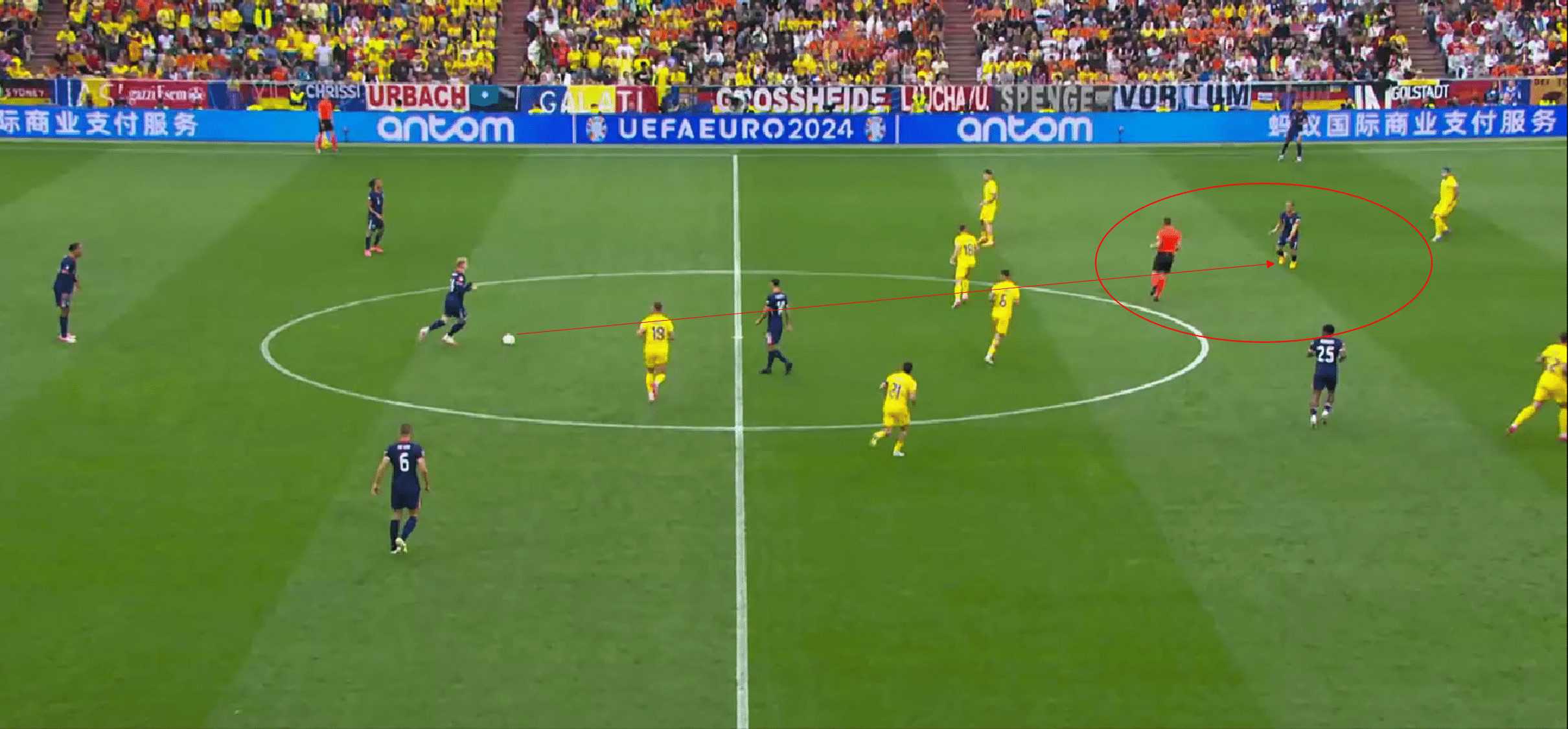
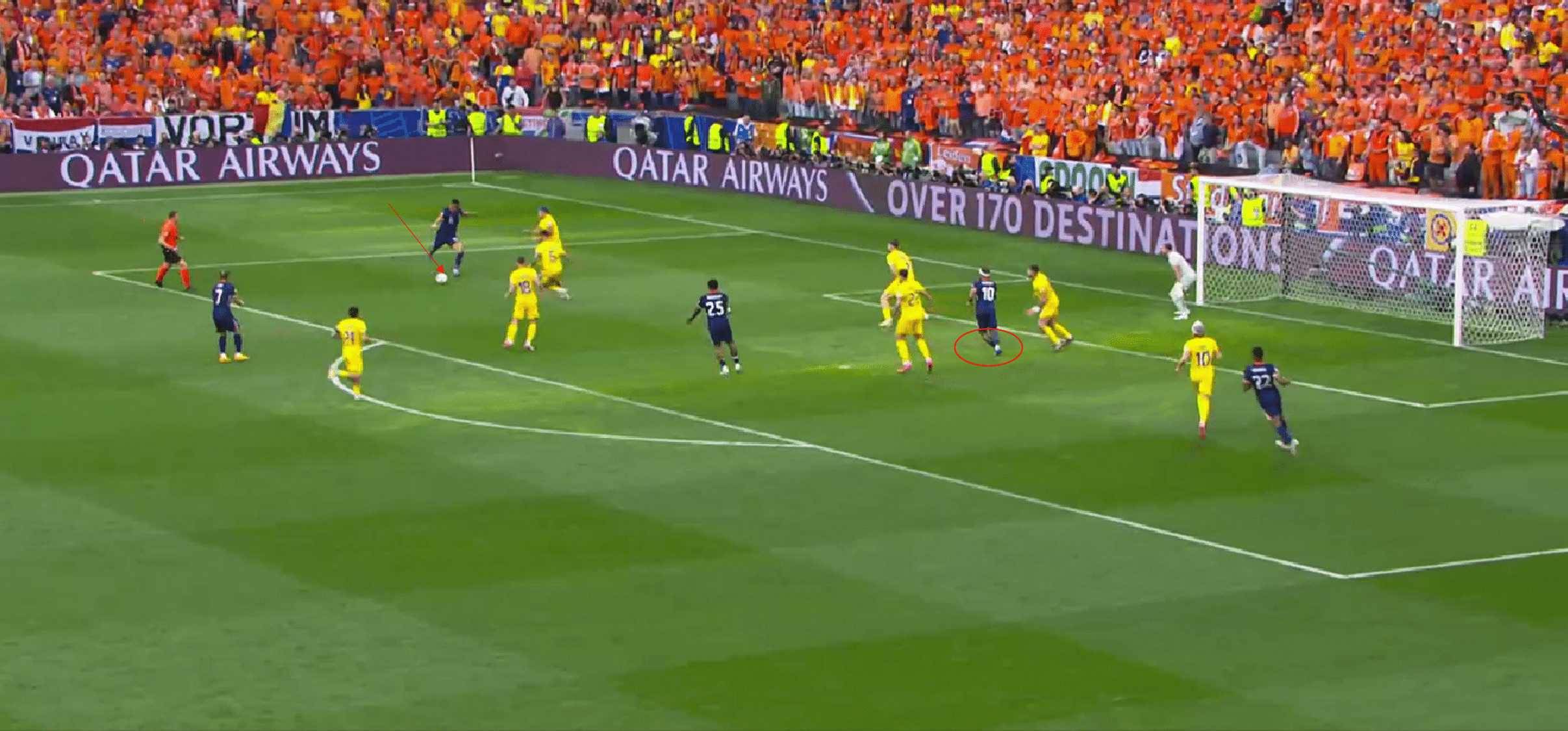
Depay moves around a lot and forces the defender to react to him coming into midfield and then making a deep run. Both wingers are wide enough to open up space for Simons, who receives the ball between the lines and can turn towards the goal quickly. He passes the ball out to Gakpo, who moves inside swiftly and has enough space to get his shot off, resulting in a goal.
The second goal against Romania is an even better example. It resulted from a throw-in for Koeman’s squad.
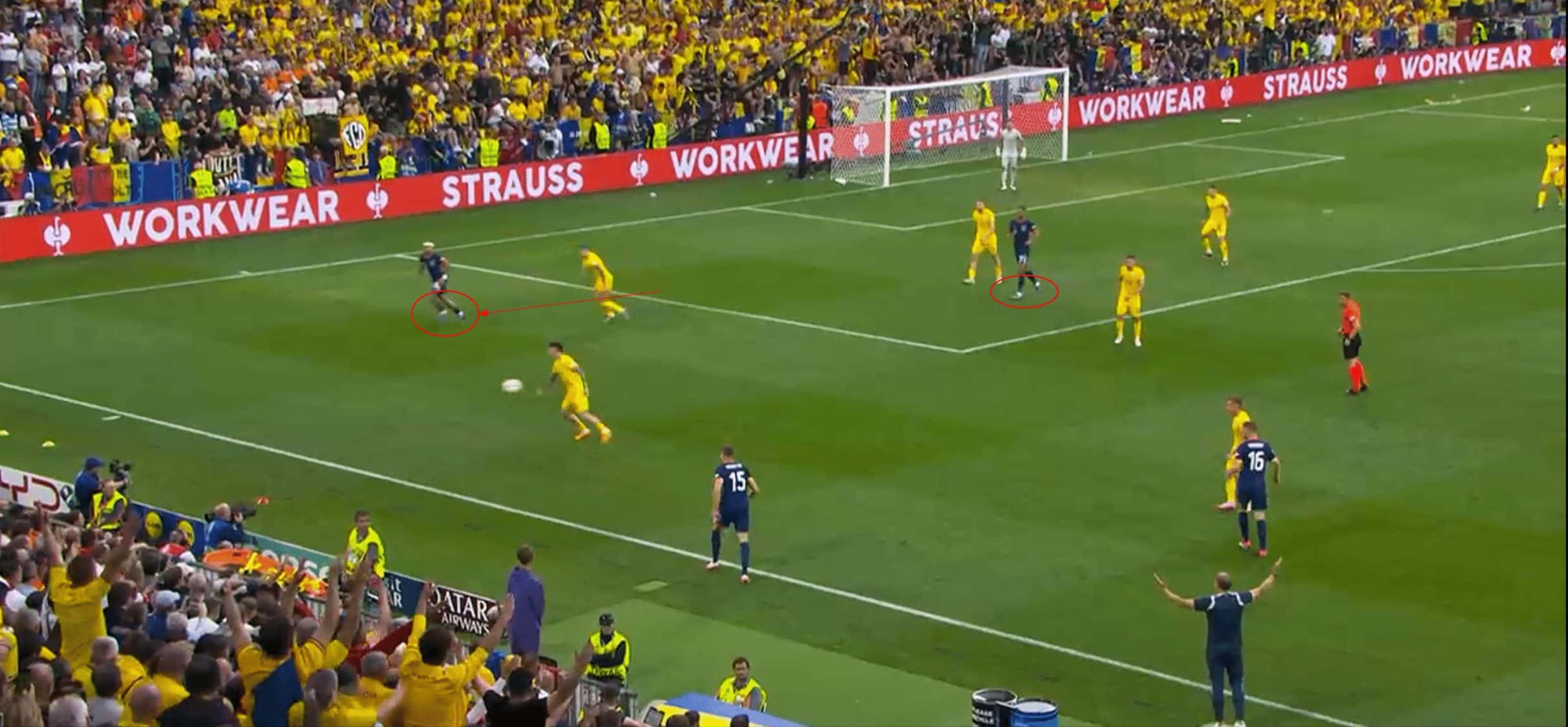
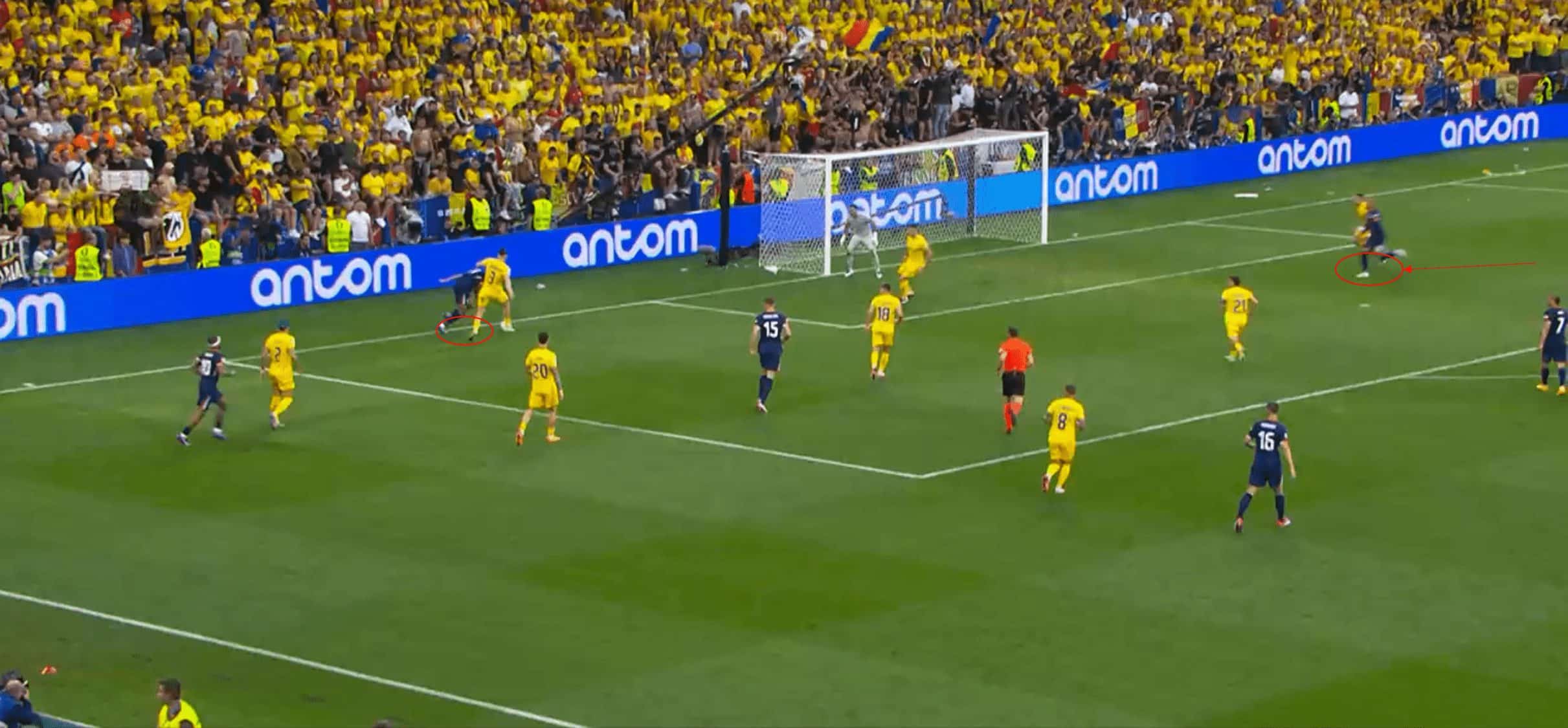
Depay moves outside while Gakpo moves into the box. Gakpo receives the ball inside the box, wins his take-on, and crosses the ball into the middle, where Malen has moved inwards as well. Romania’s defence was not able to pick up the runs of Gakpo and Malen, which ended up in an easy goal for the Netherlands.
Türkiye are a very ball-orientated team, pressing the ball over and marking every man. They have shown a lot of problems against teams using a lot of movement and attacking the far side of the pitch, which is something the Netherlands excel in.
Türkiye’s proficiency with set pieces
Set pieces have been crucial during the last couple of big tournaments. At the Euros 2024, this trend didn’t really continue, but set pieces are still a very good way to score goals at the international level. Türkiye has been elite at creating goal-scoring opportunities from set pieces. Both of their goals and multiple other big chances against Austria have been the direct consequence of set-pieces.
If we look at the attacking corner kicks Montella’s team had against Austria, it is obvious that they were very well prepared to go up against the zone coverage Austria usually plays while defending corners. Türkiye are actively overloading the zone at the near post.
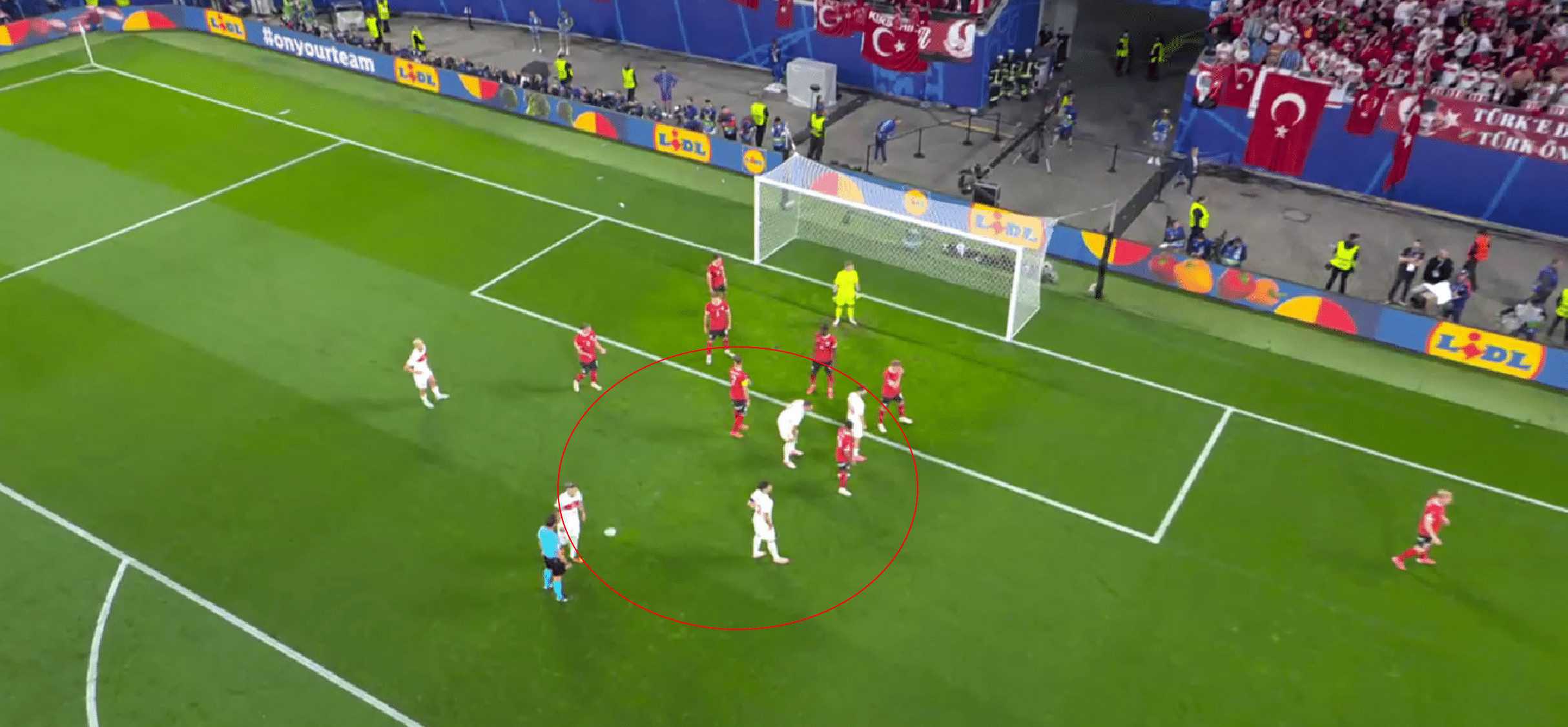
Montella’s team is gaining a numbers advantage in the most critical zones in the box. They are also preventing the Austrian defender from marking all of their players. The players move towards goal when the corner is crossed into the box. The defenders are supposed to pick up the Turkish attackers, but they can’t because of the overload and the timing. This ended up in a goal in the first minute of the match, after Pentz was not able to collect the delivery, and Demiral was able to put in the rebound. In the second scene, the Turkish attacker is able to easily head the ball towards the goal but puts it above the bar.
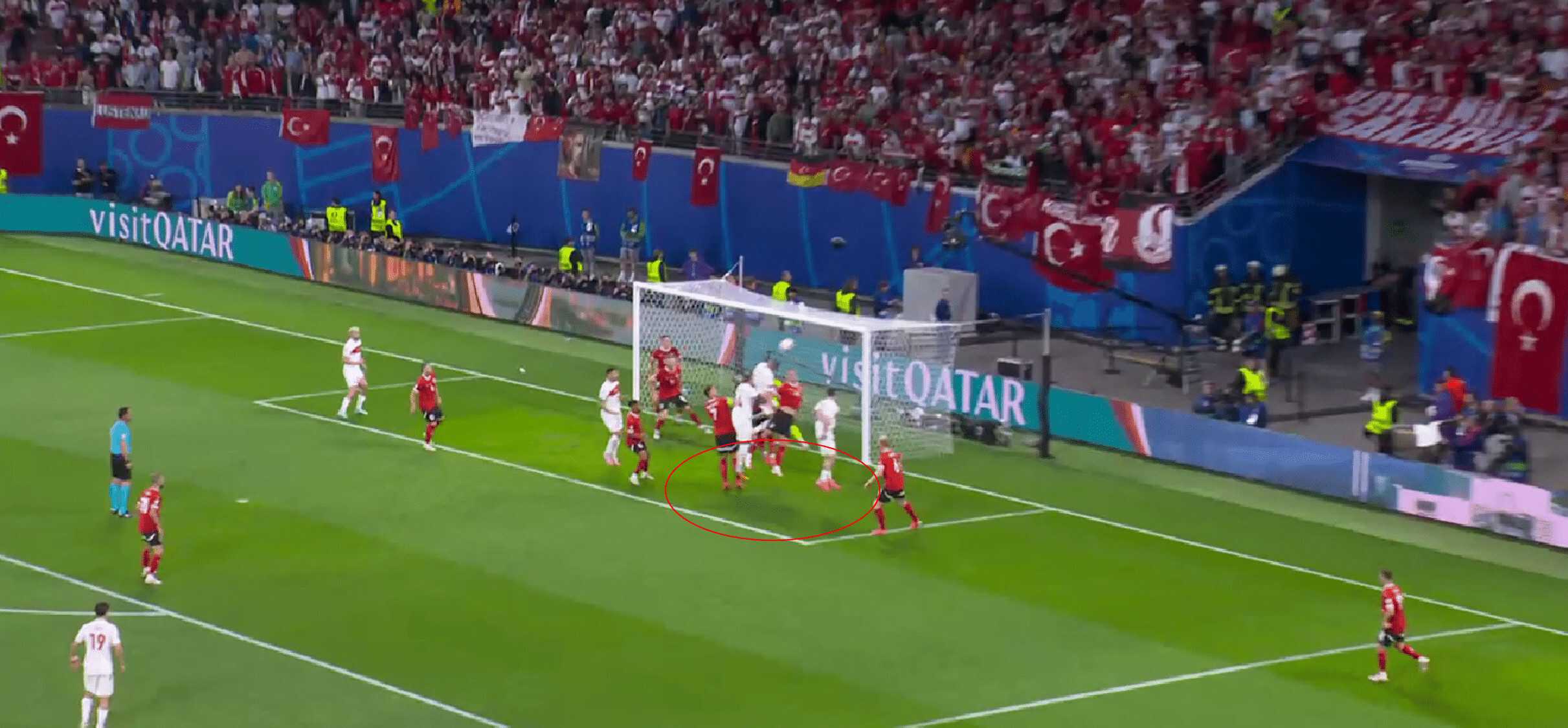
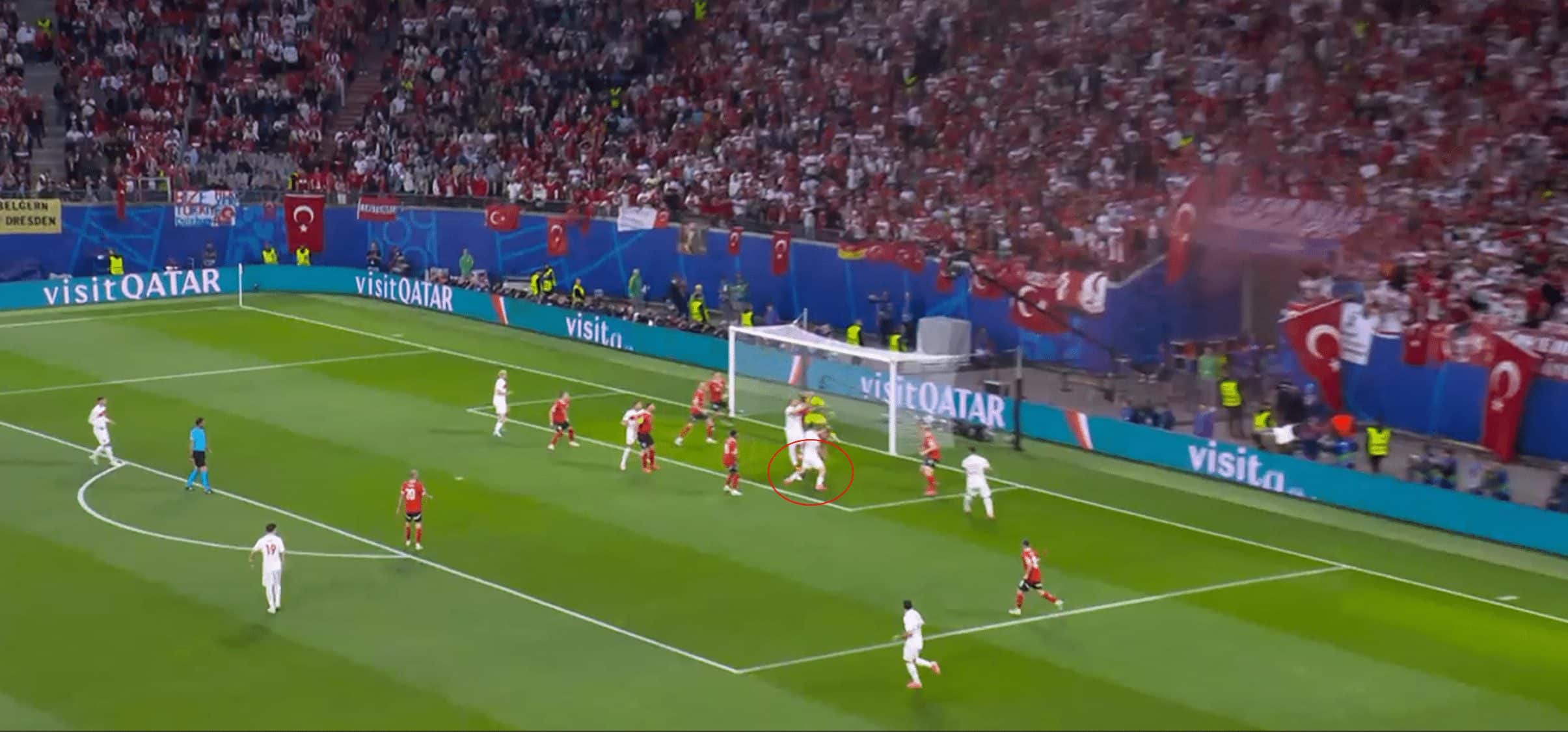
The Dutch are using a pretty similar tactic of defending corners; they are also playing a lot of zone coverage with an exposed near post. If Türkiye wants to be successful, their set pieces must be as well prepared as they were against Austria.
The Netherlands need to use their counterpress
Johan Cryuff was one of the pioneers of Dutch football. His style is still used today by many successful teams, such as FC Barcelona or Ajax Amsterdam. His “total football” was a very possession-based style, with a big focus on winning the ball back immediately after losing it. This principle was later adopted by the likes of Ralf Rangnick, Pep Guardiola, and Jürgen Klopp into what we now know as counterpress.
Türkiye has been really vulnerable after winning back the ball. While they were playing very defensively against Austria, they were winning back a lot of balls in their own third. Instead of getting good opportunities in counterattacks, however, they actually lost a lot of balls because of Ralf Rangnick’s counterpressing measures.
In this example, Türkiye has just won the ball back in their final third, and Arda Güler has the ball. Instead of playing a quick pass to initiate a counterattack, the Turkish players try to progress the ball by carrying it. Czechia plays with a narrow shape and instantly is able to win the ball back yet again.

After winning the ball, Montella’s team still is very forward-oriented and tries to get as many men towards the goal as possible. After losing the ball, they left acres of open space for a Czech attack, which ended up a good opportunity for the opposing men.
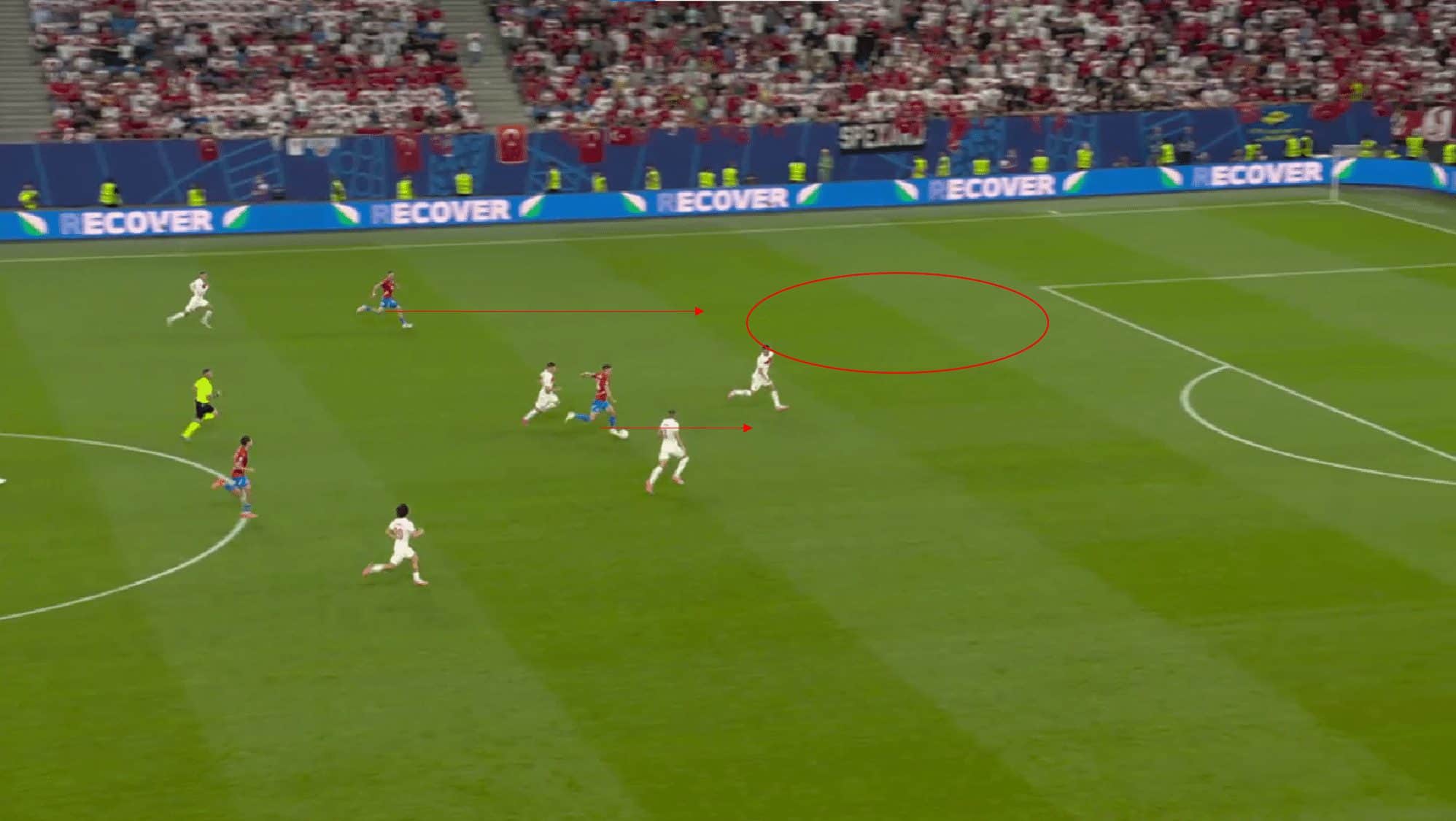
The concept of counterpressing is deeply rooted in the identity of both the Dutch national team and Ronald Koeman. If the Dutch want to expose one of the Turkish’s flaws, they will need to go back to their roots and actively use their counterpressing to help them create opportunities to attack.
Türkiye need to counter
The Netherlands will go into the fixture as the clear-cut favourites; there is no denying that. Türkiye are used to being an underdog, as it was the same in their game against Austria and their group-stage game against Portugal.
In both games, Montella’s men resorted to playing in a very defensive, some might say ‘old-school Italian’ manner. The team dropped back into a deep block, trying to prevent the opponent from creating easy chances. The problem is that although they might be more compact defensively, they are also far from scoring a goal themselves. For teams in a deep block, finding quick solutions after winning the ball is crucial to creating goalscoring opportunities for themselves.
On the other hand, the Netherlands has had its fair share of problems defending against counterattacks. Their shape is rather wide, and their counterpressing is far from perfect, which prompted many teams to create chances this way. Denzel Dumfries is one of the main targets of those teams. He is a very aggressive right-back, always pushing upwards into the opposing team’s half and not covering much space behind him. Here, there are chances for Türkiye to actually hurt the Dutch.

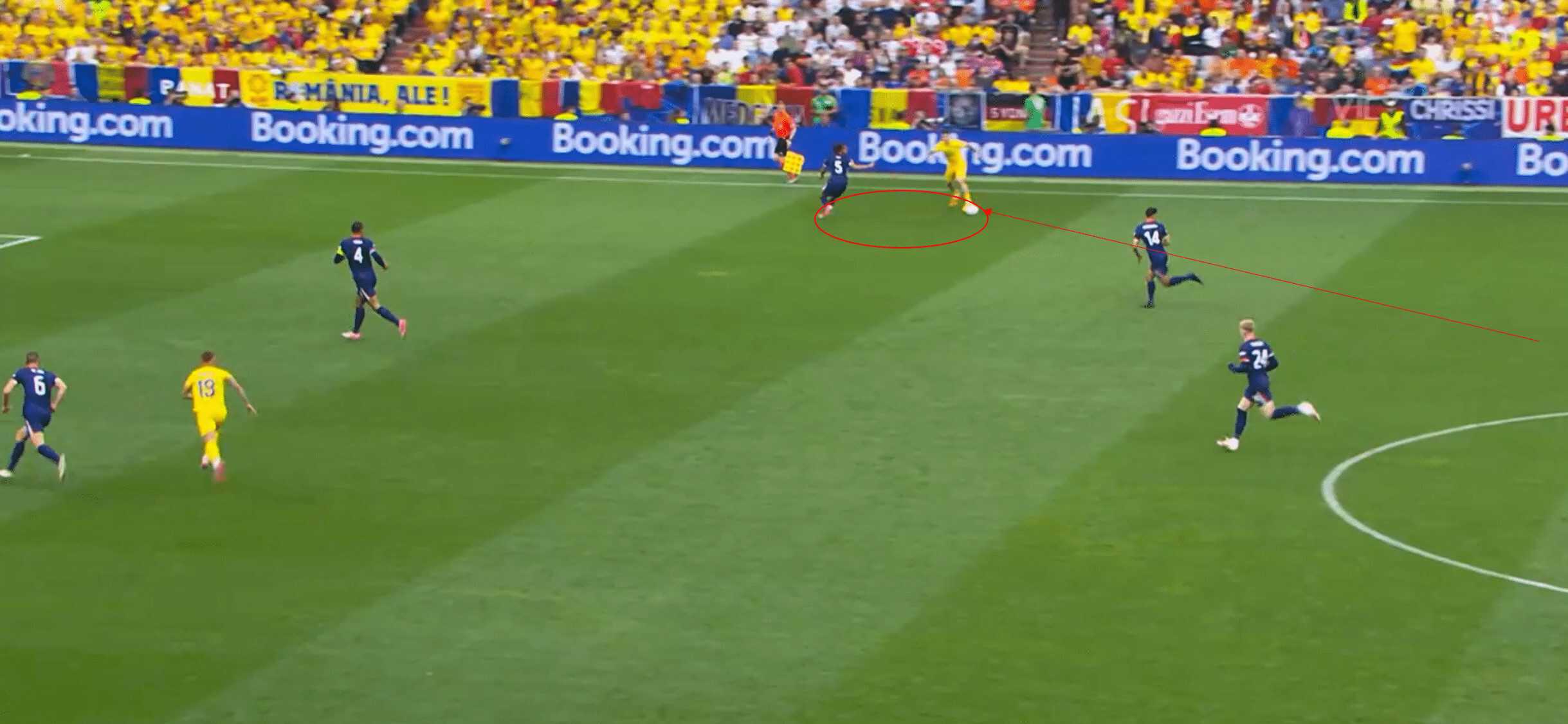
As seen in this example, one long ball is enough to start the counterattack for Romania andcounterattackDutchmen’s defensive flaws.
Unfortunately, the Turks have had huge trouble starting counterattacks, as highlighted. They have had only three successful counterattacks throughout the tournament, with two of them coming in the closing minutes of the knockout game against Austria while leading. If Montella wants to have a shot at beating the Netherlands and advancing to the semi-final, he needs to have his team counterattacking.
Conclusion
Overall, both teams have had their struggles during Euro 2024 so far, yet both have made it into the top eight in Europe. On paper, the Dutchmen are heavily favoured because of their rising form and their good performance against Romania, but Türkiye should never be counted out, and they have proven that multiple times now.
A huge external factor will be the fans. The huge Turkish population in Germany has definitely shown up and actively helped their team win games. The hostile environment they are creating has created problem for multiple strong teams, the constant whistling is an annoyance for the opposing teams. Koeman will need to prepare his men for a hard fight if they want to have a chance of succeeding. Tactics might be one thing, but in the end, one question mark always remains: Who wants it more? We will find an answer to that question on Saturday in Berlin.

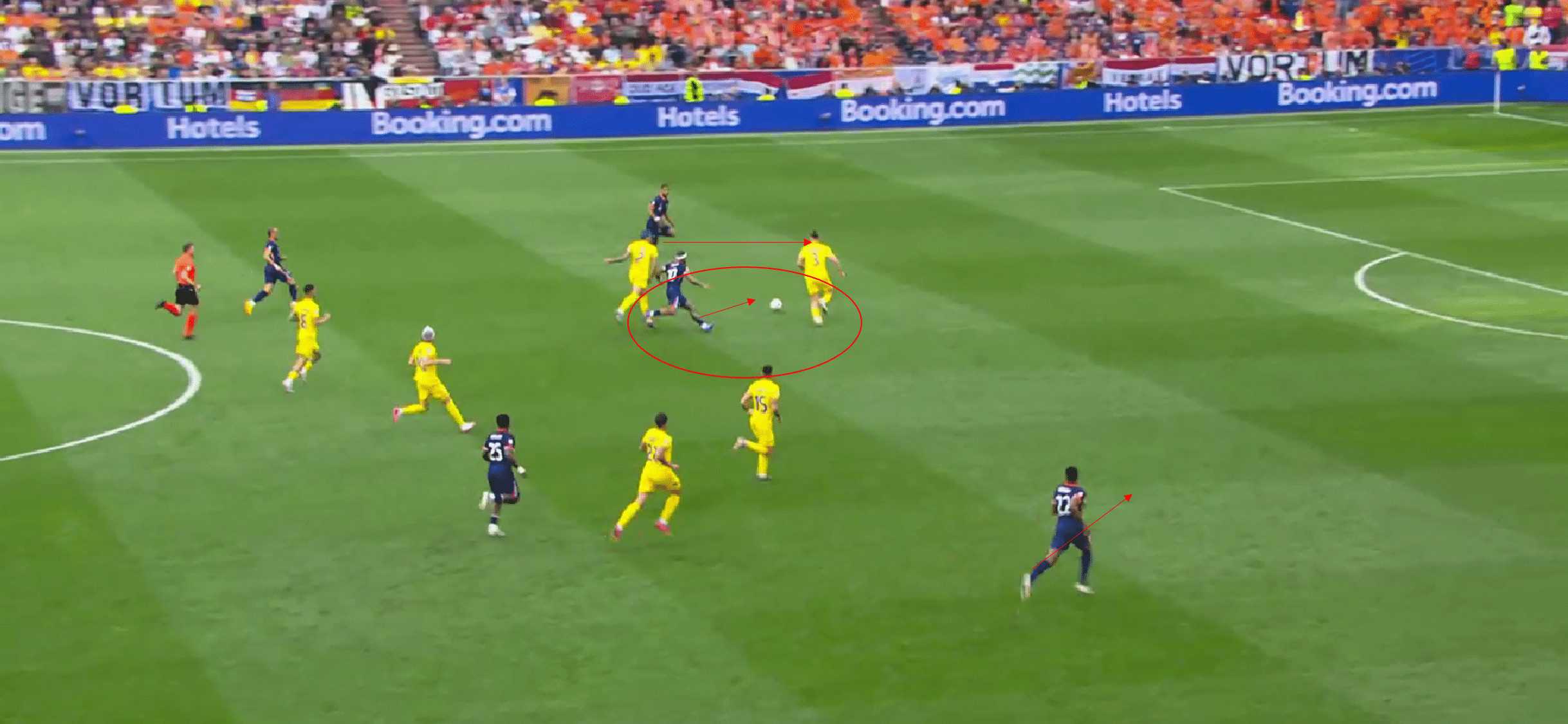




Comments